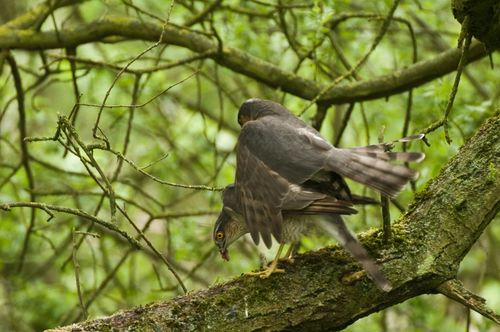Raptor revelations in Broadway, Worcestershire
Mark E Turner
Red Kites
The Red Kite is happily nowadays a national treasure amongst our native fauna, representing a phenomenally successful reintroduction scheme and featured in countless television programmes. It has become recognisable to even non-bird-watching members of the general public and this is becoming increasingly the case year on year in our locality of Broadway, Worcestershire.
Once again 2013 was no exception, we received a flurry of reports of the ‘Great fork-tailed One’ this summer from Broadway residents beginning 8th June and finishing 21st July. Except for the last sighting which I will come to, I believe it was the same individual that followed the same west to east route each time, coming from the Cheltenham Road side of the village, which was also significant in the last sighting, and headed off over the escarpment via Fish Hill.
The bird consistently patrolled low and slow over housing estates presenting a surreal experience for those of us lucky enough to be in the right place at the right time. More than once I was in a position to scrutinise through binoculars revealing synchronous moulting of mid-wing remiges and no wing-tags fitted. It begs the question was this bird bred locally and dispersed as a juvenile from its natal home? Red Kites have been resident in the North Cotswolds now for a good twenty years to my knowledge and I believe it is one of the regions best kept secrets regarding roosting/breeding haunts.
Now, that last sighting of the summer was made by a retired couple living in the Cheltenham Road area of the village who are seasoned Kite-watchers of many years. This time however, one Kite had become two and sadly that remains as I write (September) the curtain call to another Milvus mystery.
Hobby
There has been another similar raptor visitation this summer also to the residential estates of Broadway, albeit less obvious to the average passer-by. A handful of us were blessed with visions of the striking Hobby, often hawking resident breeding House Martins around the avenues. Sometimes seen as a pair, sightings were mostly of a marauding individual breaking into dramatic, breathtaking chases down roads and into gardens. We were aware of their presence from 22nd June through August, but have shown to be at large here as late as 15th October, a record from 2007 and an extreme early arrival date was 7th April 2000. They are truly another success story for sure.
Sparrowhawks
During the 2013 breeding season a pair of Sparrowhawks (01) was the subject of a nest monitoring exercise by the wardening team at Broadway Gravel Pit LNR (SP087379). It proved to be a rollercoaster of great entertainment mixed with deep anxiety experienced by the team whilst the hen bird built her eyrie on top of an old Wood Pigeon nest and sat tight through all weathers for 42 days. From that not so old Wood Pigeon nest during the hawks’ rebuild a former tenants egg was dislodged and came to rest amongst the tree’s twiggy branches inches below the nest and miraculously remained there for several weeks. The male hawk meanwhile, kept his mate supplied with regular meals which were always consumed away from the nest.
We learned a lot about hawk behaviour during this period, but sadly the outcome was not what we’d hoped for. The male went missing presumed dead and the female we believe, abandoned the nest in order to feed herself.
Ironically, although we continued to keep watch hoping some miraculous outcome would evolve, we knew it was all over when Wood Pigeons returned to inspect the site.
A more detailed rundown of Sparrowhawk home life will be published in the 2013 Broadway Gravel Pit logbook due out in spring 2014 which will be held at Worcestershire Wildlife Trust HQ and available on request from Helen Woodman for perusing in-house.
Acknowledgement
Photograph by kind permission © Bob Cooper
Images
01. Sparrowhawk pair mating. Bob Cooper.
